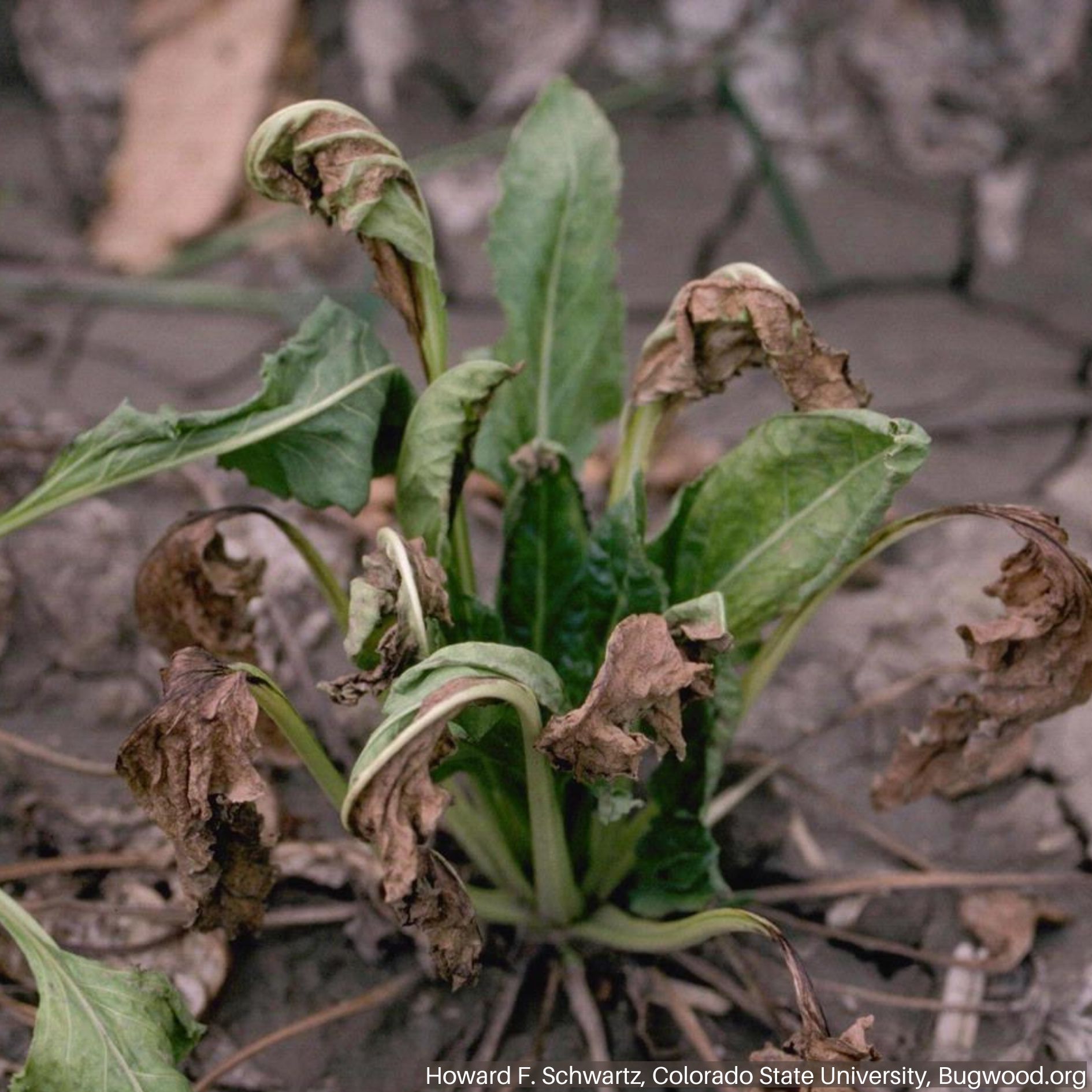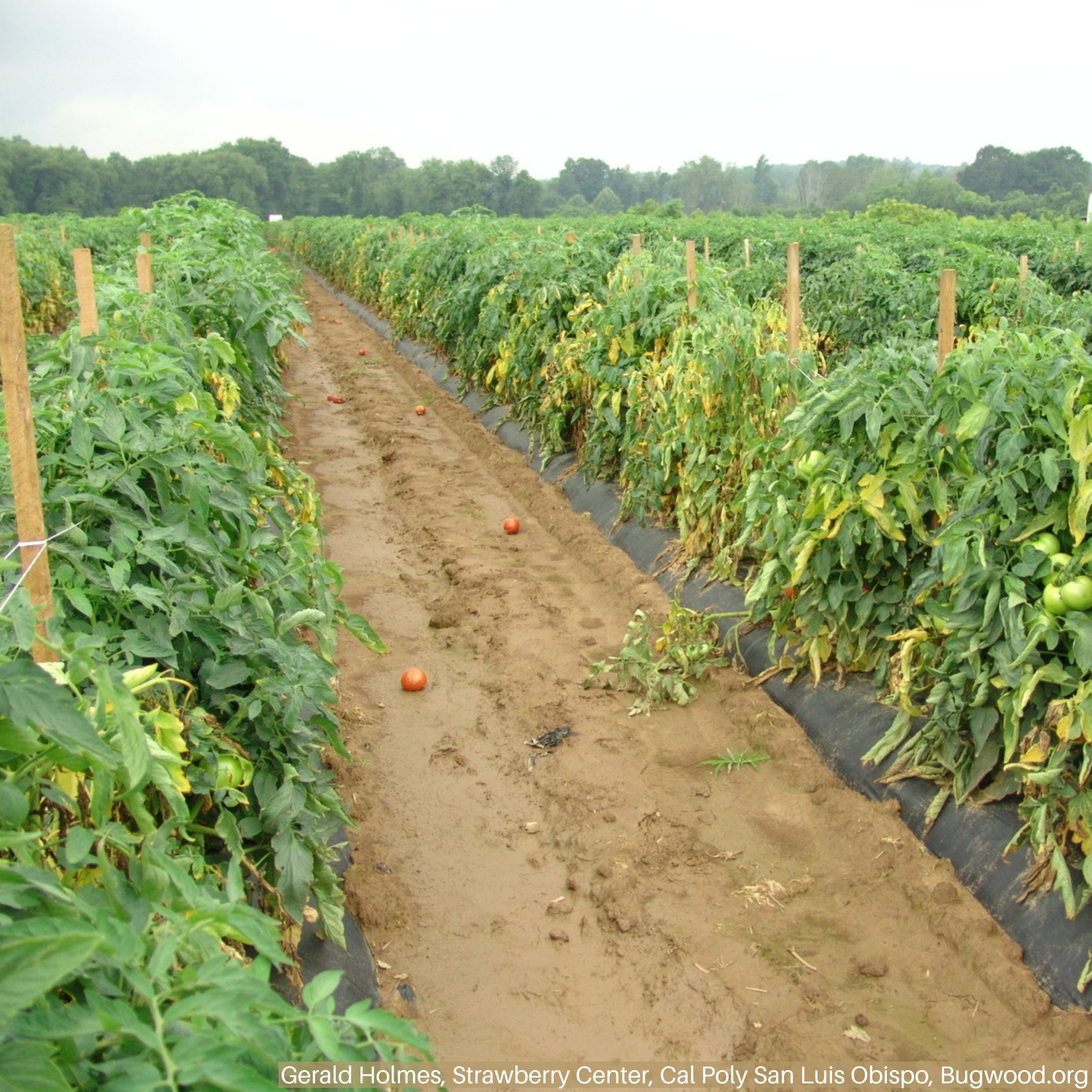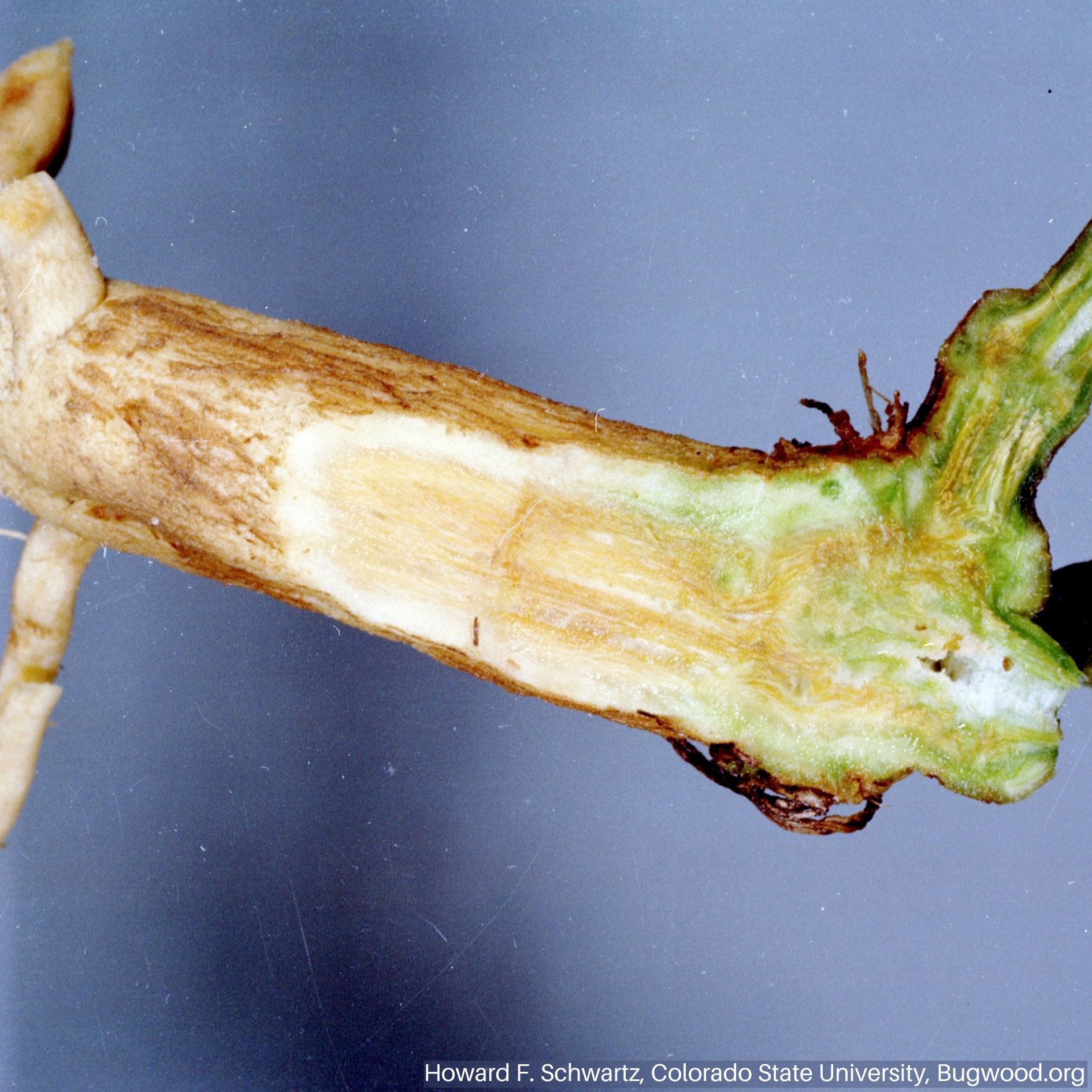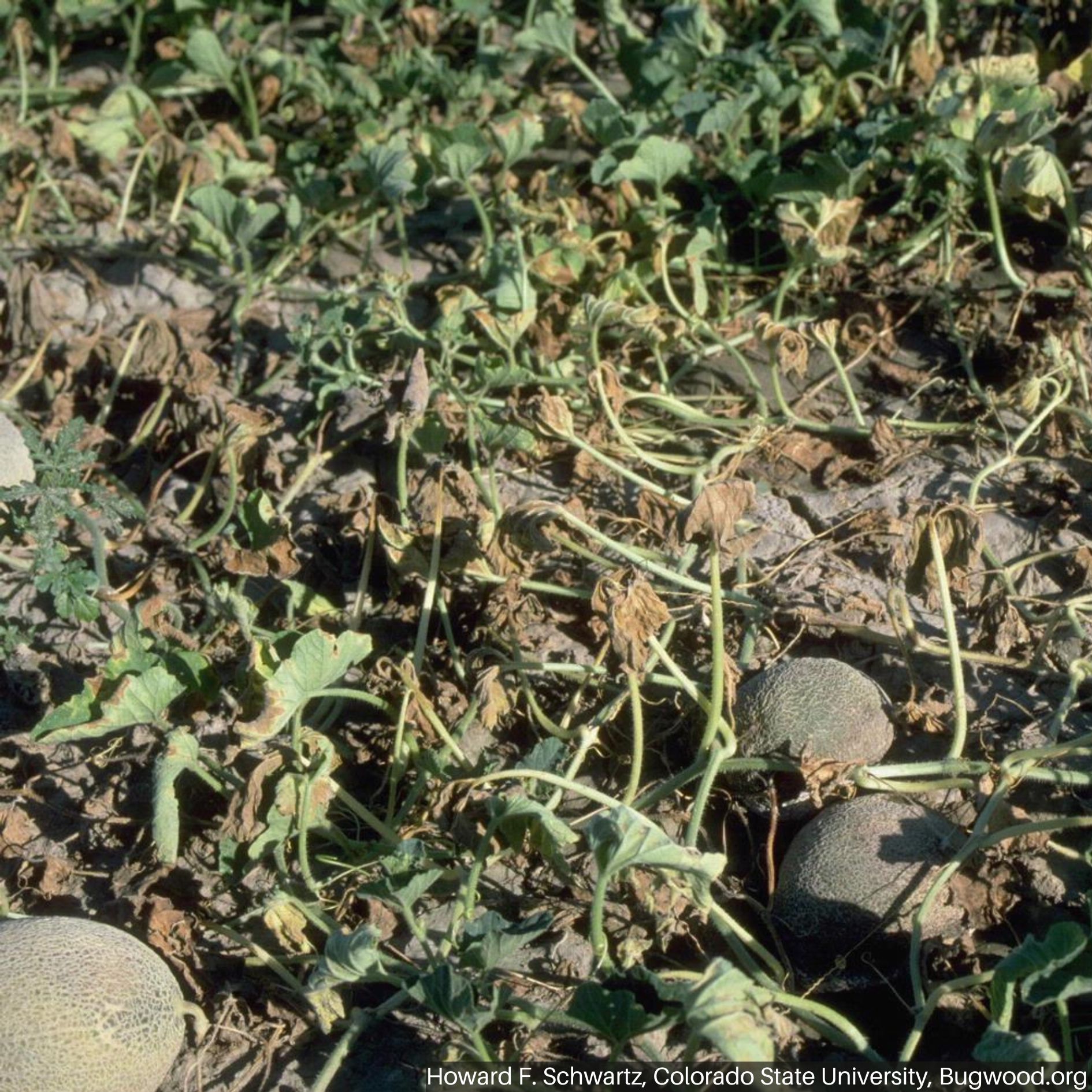Fusarium Wilt
 Foliar Symptoms on a Sugar Beet
Foliar Symptoms on a Sugar Beet Tomato plants with chlorosis and wilting foliage.
Tomato plants with chlorosis and wilting foliage. Discolored vascular tissue.
Discolored vascular tissue. Infected Melon Plants
Infected Melon PlantsHOSTS
- Alfalfa
- Asparagus
- Brassicas
- Cucurbits
- Garlic
- Hemp
- Legumes
- Onions
- Potatoes
- Root Crops
- Solanaceae
OVERVIEW
Fusarium wilt is caused by Formae speciales (special forms) of the fungus Fusarium oxysporum. The pathogen is highly specific. For example, the forma speciales that infects tomato does not infect pepper or any other vegetable. Each forma speciales is specific to one crop.
This disease is widespread in Utah cantaloupe, pea, and tomato production, occasional in celery, cucumber, pumpkin, squash, and watermelon, and rare in potato.
BIOLOGY
F. oxysporum is seedborne and soilborne. The pathogen can survive for many years in plant debris or soil as resting spores called chlamydospores. When conditions are wet and warm, the chlamydospores germinate and produce infectious spores, called hyphae. Hyphae invade plant tissue by penetrating the root tissue or through pre-existing wounds. Inside the plant, the hyphae move to the vascular tissue where they will produce additional spores, clogging the host's vascular system. This can lead to the death of the host plant, on which the fungus will continue to produce spores for infection and overwintering.
SYMPTOMS
Symptoms can vary depending on host species, but general symptoms include:- Foliar chlorosis.
- Wilting plants.
- Red to purple discoloration of leaves or stems.
- Stunted and/or distorted growth.
- Brown discoloration of vascular tissue.
- Reduced yield or seed production.
SCOUTING
- Watch for symptoms when soil moisture and temperatures are high (90°F).
- Monitor areas that have had the disease in the past.
GENERAL MANAGEMENT
- Use certified disease-free seed.
- Use resistant varieties when available.
- Plant on raised beds for better water drainage.
- Clean equipment and shoes from attached soil.
FUNGICIDES
There are no chemical controls for Fusarium oxysporum.

